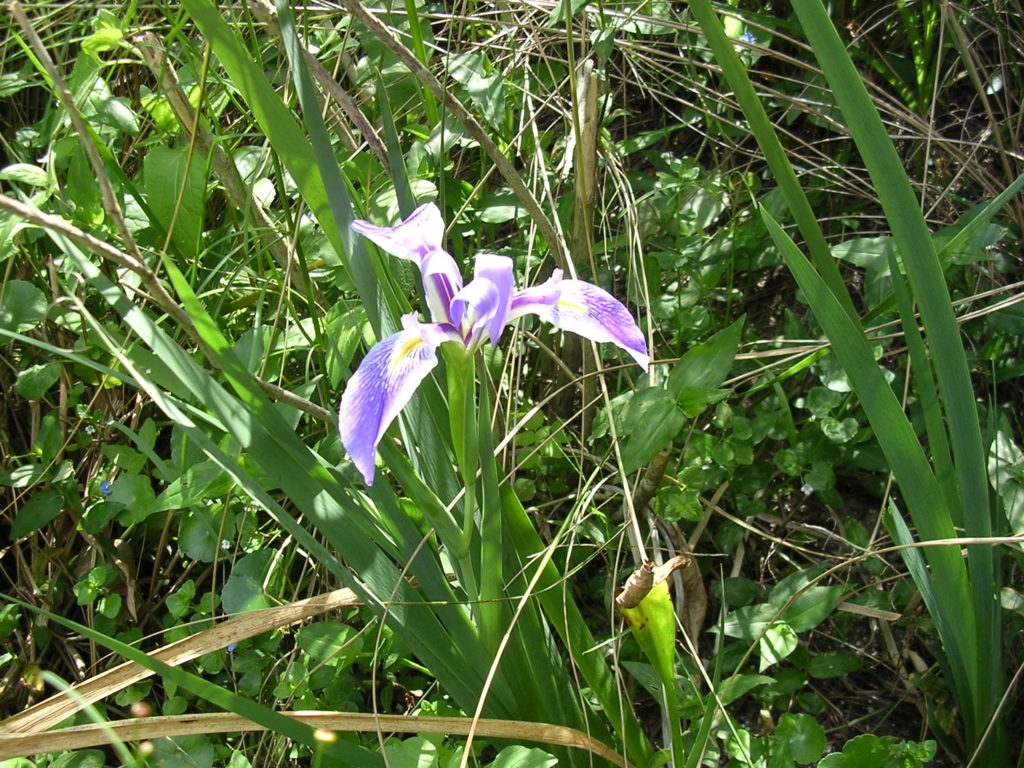Prairie Iris
Iris hexagona var. savannarum
Prairie, or Dixie Iris is native to all of Florida down to Palm Beach County, north to Missouri and west to Texas. The leaves are two to four feet tall and the blue to purple flowers three inches wide. These bloom progressively on a stalk that rises above the bottom leaves a foot or more. The flowering season is from March to June.
It spreads on up to one inch thick rhizomes that creep along the soil surface and branch out into large patches. A few plants grouped along a lake edge can become a ten foot diameter mass in just five or less years.
Mice and birds eat the seeds and lubber grasshoppers eat the seed pods and foliage. Cattle will not eat this, nor should you; it will cause vomiting, yet is not deadly.
Prairie Iris grows in full sun to part shade along lake edges, retention ponds, swales and other low, constantly moist areas that are rich in organic matter. Sometimes a little fertilizer is needed to keep the plants healthy.
Torpedo grass can be an obnoxious competitor and should be kept from invading the planting with monthly pulling. If Iris is sprayed with Roundup, the leaves will die back and then regrow in a month or two. This is good to know in case a “Lake Maintenance” company gets out of hand.
This does not tolerate salt air or water and will die out if the soil remains dry for too long. I have seen it creeping up from a swamp to the base of nearby oak trees where the soil is rich and barely moist.
This is one of the most hardy plants to grow along a lake or pond edge and makes a beautiful mix with other aquatic, littoral zone plants. It must be out of the water for most of the year in order for nutrients to be available to it.
If the water has fertilizer in it, such as a farm or decorative Koi pond, it can be planted in up to a foot of water. When planted in a container, it will spread out of the pot and may need cutting back once in a while.
When landscaping a lake edge, I plant Fragrant Water Lilies out to a two foot depth with chicken wire around it to keep out Lily eating turtles and grass carp. Thalia, Soft Stem and Giant Bulrush do well too in this deeper zone. In one foot of water I plant Pickerelweed, Duck Potato, Spikerush, American Crinum Lily, and American Bulrush.
In the moist soil up to the grass line, which can be extended uphill, I plant Prairie Iris, Yellow Canna, Sand Cordgrass and Duck Potato. If the soil is compacted and nutrient poor, Salt Meadow Cord Grass can be used to fill these impossible areas.
Keep in mind where the water will be during the rainy season. Don’t get fooled into planting out into the pond when water levels are low or your planting will soon drown under three feet of water.
Bald and Pond Cypress, Red Maple, Water Hickory, Florida Elm, Dahoon Holly and other wetland trees give a beautiful effect. Try to make an island out in the water as far as possible and plant Pond Apple there. Herons, egrets, woodstorks, cormorants and anhingas may nest there.
